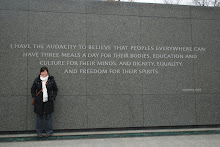As a teenager, I was part of a church that celebrated the Lord's Supper by passing around a plate of translucent communion wafers. These flimsy wafers bore a strange resemblance in size and shape to Pogs, small cardboard discs that young adults who were kids during the 90's might remember collecting. I doubt they taste much differently. The 0-calorie discs of “bread” dissolved as soon as they touched my tongue, and with a swish of grape juice, I sensed no trace of Christ's body left in my mouth or in my body. What a contrast to the Feast that I participate in every week at the Abundant Table.
The Abundant Table, a small house church and campus ministry that started up an organic farm last year, breaks bread using a fresh roll made by our priest or a church member. I savor the bread and can feel its substance as it passes down my throat. After the Eucharist and a blessing, we continue the Feast together with a potluck dinner. About three-quarters of the worshipers at the Abundant Table are either members of the farm's Community Supported Agriculture (CSA)* program or are farmers/ farm interns who work to supply about 60 CSA members with vegetables and fruits from the 5-acre organic Farm near our house. As one can imagine, our potluck dinners feature the farm's bounty in a mouth-watering array of dishes. We feast on Julie's spinach and zucchini lasagna, Erynn's kale salad, Josephine's roasted beets, and then top it off with Seth and Ana's Indian-spiced almond and carrot pudding.
I believe that our celebration of Eucharist can lend itself to an awareness of how we eat during the meals following, whether they be potlucks inspired by a farm's harvest, lunch from a drive-through, or a youth group's snack time. Are we eating “cardboard wafers,” or are we feasting on food directly connected to real hands and to creation? I think of the Abundant Table (yes, we're an aptly named bunch) as practitioners of a hearty Eucharist feast. The bread that we distribute once shared strands of gluten with the rest of the loaf; through sharing it, we remember our inter-connectedness with one another and with Earth.
Author and farmer Wendell Berry calls the very act of eating a sacrament, “by which we enact and understand our oneness with the Creation, the conviviality of one body with all bodies.”** This begs some questions about how we eat the sacrament of Christ's body and the extension of that sacrament into daily life. Do we eat mostly alone? How do we share the food and resources given to us? Are we consuming what Michael Pollan calls a “food-like substance,” or are we eating food that comes from healthy plants and animals, that finds its source in the Earth that sustains us? Ultimately, if we believe that the sacrament of Eucharist draws us together into new life as the body of Christ, let us not separate that life from the health of our physical body.
* Community Supported Agriculture (CSA) is a relationship between a farmer and community members in which members commit to financially supporting the farm for a season, and in return, receive weekly delivery boxes of the farm's harvest. See our website, www.jointhefarm.com, for an example CSA.
** Wendell Berry, “The Body and the Earth,” in Norman Wirzba, ed. The Art of the Commonplace: The Agrarian Essays of Wendell Berry (Berkeley: Counterpoint, 2002), 93.
A few suggestions for churches/ youth groups/ individuals looking for next steps for connecting with food, one another, and Creation:
-Start a small garden at your church. Connect the Garden to your church's Sunday School curriculum for kids, like St. Paul's Episcopal in Ventura, CA does. Or, grow grapes for communion wine!-Volunteer at a community garden to learn how to grow your own food and connect with others. To learn more about community gardening, visit http://www.communitygarden.org
-Plant some vegetables and fruits instead of shrubs and lawn in your yard. Visit http://www.dinnergarden.org/ for a great example of home gardening with a vision.
-Contact a farm for a service-learning trip. Two youth groups from All Saints, Pasadena, and St. Wilfred's, Huntington Beach, recently spent a rewarding week connecting to the land through helping with work on our farm.
-Subscribe to a CSA, share a box with a friend, or start a CSA drop-off site at your church. It's a great opportunity to connect with farmers and other members of the community. Check out http://www.localharvest.org for a directory of CSAs and farms nearest you.
-Take your youth group on a trip to the local farmer's market to learn about where their food comes from and how it's produced.




